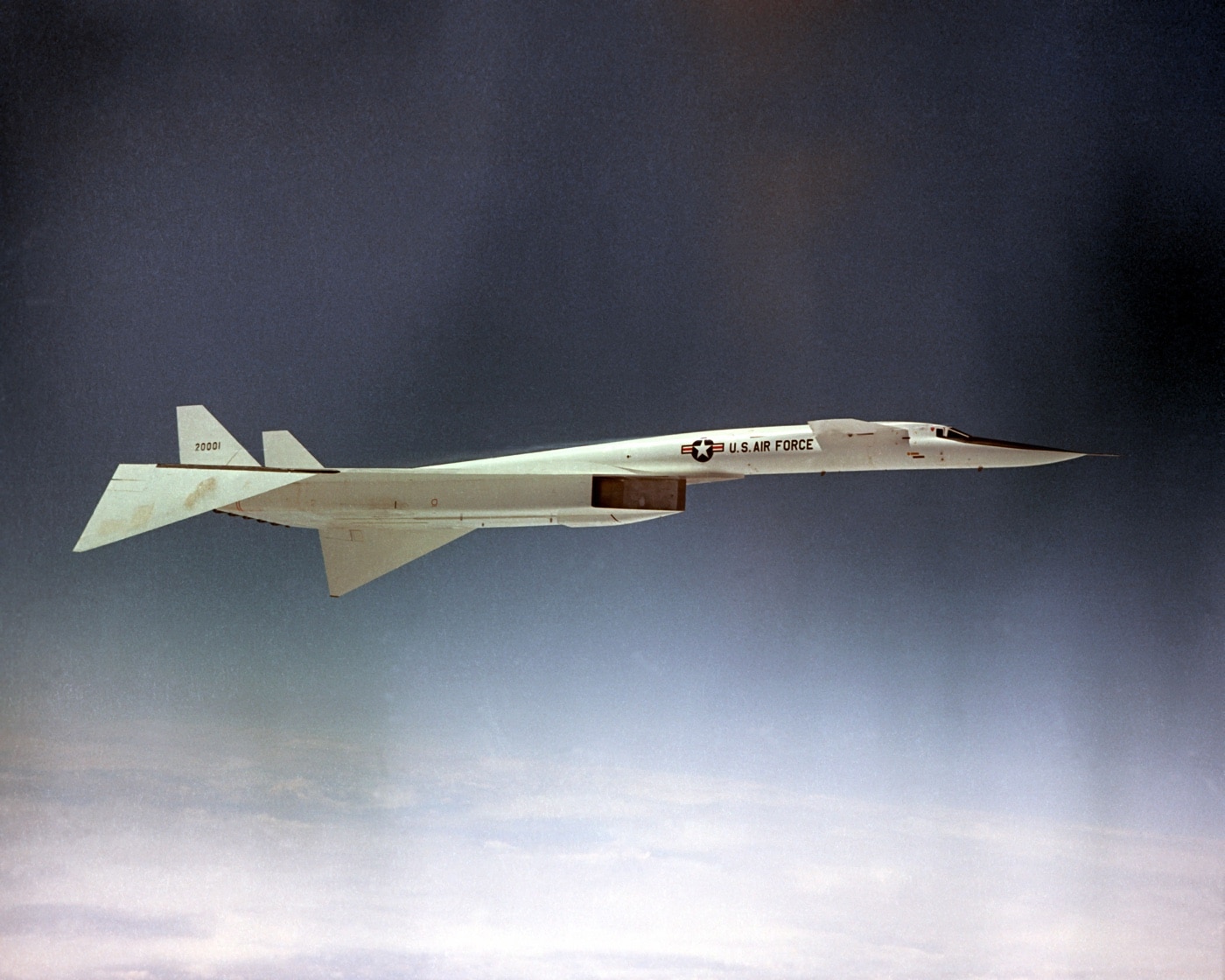The North American Aviation XB-70 Valkyrie was designed to be a supersonic strategic bomber for the U.S. Air Force, replacing the Boeing B-52 Stratofortress and the Corvair B-58 Hustler. Developed in the mid-1950s, the Valkyrie was intended to fly faster and higher than its predecessors to evade interceptor aircraft. However, advancements in Soviet surface-to-air missile (SAM) technology necessitated a shift in bomber tactics from high-altitude to low-level penetration, diminishing the Valkyrie's strategic advantages.

The XB-70 program faced financial challenges and an evolving strategic context that de-emphasized manned bombers in favor of Intercontinental Ballistic Missiles (ICBMs). Despite its advanced design, the U.S. Air Force canceled the Valkyrie project in 1961. The program's legacy included notable aerodynamic research and new technologies, such as stainless steel honeycomb panels for heat resistance and "compression lift" to enhance lift at supersonic speeds. Even though the bomber program was cut short, two XB-70 prototypes were ordered for research purposes.
The XB-70's history experienced a significant setback in 1966 when a mid-air collision during a photo shoot destroyed one of the two prototypes. This incident highlighted both the risks and technological wonders of the aircraft. Nonetheless, the remaining Valkyrie provided valuable data, contributing to future aerospace developments, including the Rockwell B-1 Lancer bomber and the Tupolev TU-144 jetliner. The last surviving XB-70 now resides at the National Museum of the United States Air Force.
For more information, read the full article: North American XB-70 Valkyrie — America’s Cold War Supersonic Speed Bomber
No comments:
Post a Comment